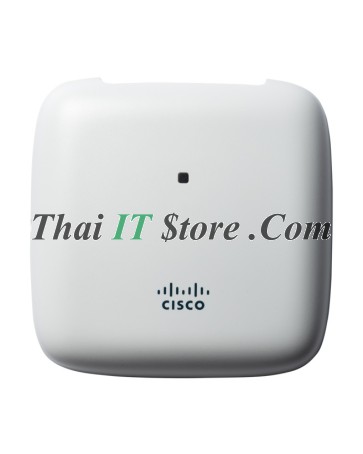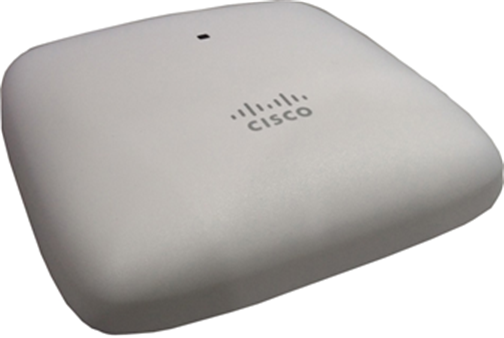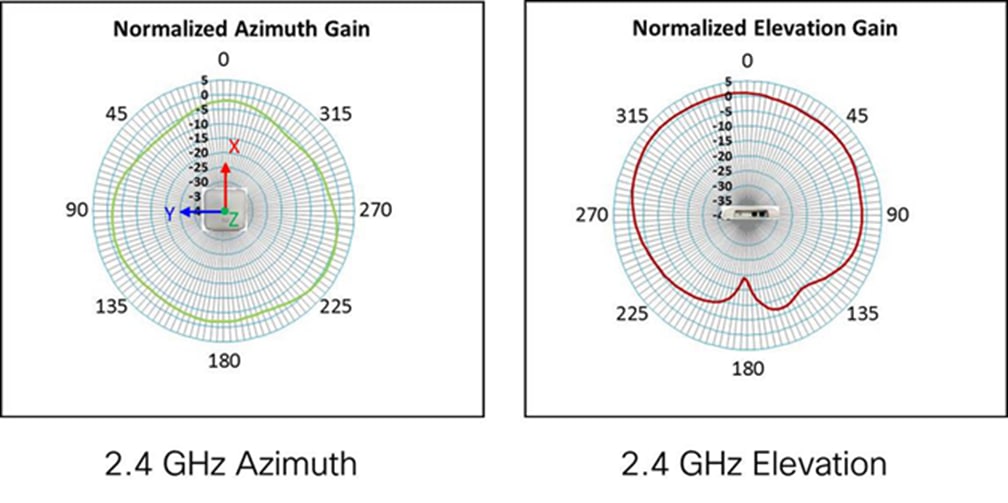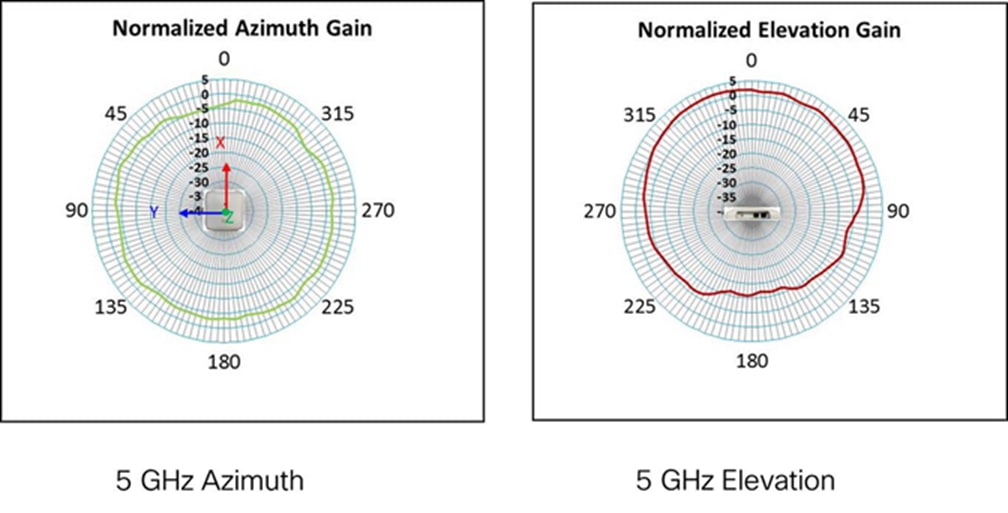- หน้าหลัก
- Wireless (แอ็กเซสพอยต์)
- Cisco | CBW240AC-S CBW240AC-S / CBW240AC 802.11ac 4x4 Wave 2 Access Point Ceiling Mount


มีบริการอุปกรณ์สำรองระหว่างซ่อมและ Onsite Services ตลอด 24 ชั่วโมง 365 วัน (ข้อมูลเพิ่มเติม คลิก...)
Cisco | CBW240AC-S CBW240AC-S / CBW240AC 802.11ac 4x4 Wave 2 Access Point Ceiling Mount
| Band: | Cisco |
| Type: | Cisco Networks |
| Model: | |
| Part Number: | CBW240AC-S |
| Features: | Cisco |
| Detail: | CBW240AC-S / CBW240AC 802.11ac 4x4 Wave 2 Access Point Ceiling Mount |
บทความที่เกี่ยวข้อง
- Cisco MA แบบ SMB Support (CON-SMBS) คืออะไร
- Engineer Services
- Pre-Sale Services
- Cisco POE ดูยังไงว่าแต่ละ port กินไฟเท่าไร และความหมาย
- ตั้งค่า Cisco switch POE ให้จ่ายไฟ(Watt) ตามที่เรากำหนดเอง
- ดูยังไงว่า Cisco switch POE จ่ายไฟไปแล้วที่เท่าไร
- ใส่ DNS ให้ Cisco SMB switch
- วิธีตั้งค่าหรือเปลี่ยน IP Management cisco switch L2 small business
- วิธีเปิด SSH (Secure Shell) cisco small business
- วิธีเปิด Telnet cisco small business
- วิธี Save Configuration cisco small business switch ผ่านเว็บ
- วิธีเปลี่ยน password cisco SMB switch router access point
- วิธี Restore config (running startup) cisco SBM switch router
- วิธี Backup config (running startup) cisco SMB switch router wifi
- วิธี Restore to Factory Default หรือวิธีคืนค่าโรงงาน ผ่านเว็บ
- วิธี Reboot cisco SMB ผ่าน Web-base management
- วิธีตรวจสอบ Cisco SMB switch firmware version
- วิธีอัพเดท cisco smb firmware
- วิธีเปลี่ยน Password ครั้งแรก cisco web base
- ตั้งค่า COM port เพื่อ Config Cisco
- เครื่องคอมใช้ COM port อะไรตั้งค่า Cisco
- ตั้งค่า Cisco Console (Serial port) สำหรับ Config ด้วย Putty
- วิธี Download Cisco Firmware, IOS
- ติดตั้ง และตั้งค่า TFTP Server สำหรับ Cisco
- Cisco SMB Switches Reset Device รีบูทอุปกรณ์
- Cisco SMB Switches Restore Factory Default รีเซ็ท คืนค่าโรงงาน
- Cisco SMB Switches ไฟ LED System กระพริบตลอด
- Cisco SMB Connect Web-based Interface
- การรับประกัน
- การจัดส่ง
- การชำระเงิน
- ขั้นตอนขอเปลี่ยนอุปกรณ์ เพื่อทดแทนอุปกรณ์ที่เสีย (Hardware Replacement)
- ขั้นตอนการสมัคร CCO id
- Cisco SMARTnet vs SMBS
- Cisco DOA Warranty 90 วัน คืออะไร
The Cisco® Business 240AC Access Point delivers an ideal blend of predictable performance in a compact form. Incorporating 802.11ac Wave 2 features, this platform is ideal for small-to-midsize enterprise deployments.
Ideal for small and medium-sized networks, the Cisco Business 240AC Access Point delivers industry-leading performance for enterprise-class 4x4 Multi-user Multiple-Input Multiple-Output (MU-MIMO), four spatial stream access points that support the Institute of Electrical and Electronic Engineers (IEEE) 802.11ac Wave 2 standard. The Cisco Business 240AC Access Point extends support to a new generation of Wi-Fi clients, such as smartphones, tablets, and high-performance laptops that have integrated 802.11ac Wave 1 or Wave 2 support.
Features and benefits
|
Feature |
Benefit |
|
802.11ac Wave 1 and 2 capabilities with MU‑MIMO technology |
The IEEE 802.11ac standard delivers improved experience in typical environments, and more predictable performance for advanced applications such as 4K or 8K video, high-density high-definition collaboration apps, all-wireless offices, and Internet of Things (IoT). Supporting four spatial streams, MU-MIMO enables access points to split spatial streams between client devices, to maximize throughput. |
|
Simplified management |
Deploy and configure multiple Cisco Business Wireless access points and mesh extenders easily without a physical controller, using Cisco Business Mobile app. Optional multisite remote management is available through Cisco FindIT Network Management. |
|
Mesh technology support |
Mix and match Cisco Business mesh extenders or access points to increase WiFi coverage throughout your business. |
|
Flexible deployment |
Flexible deployment models supporting multiple concurrent use cases required by small businesses, including point of sale systems, surveillance cameras, guest access, and more. |
Cisco Business Mobile app
The Cisco Business 240AC Access Point is managed by the Cisco Business Mobile app, an intuitive client application that simplifies traditional challenges associated with wireless network deployment, right from your mobile device. You can extend your network by adding new mesh extenders and automating wireless network activation in minutes. A robust management capability dynamically changes network configuration such as enabling guest access. Network usage, traffic patterns, and network throughput can be closely monitored, providing a real-time snapshot; this not only provides peace of mind, it virtually ensures optimal user experience. The Cisco Business Mobile app is available for iPhone, iPad, and Android devices.
Product specifications
|
Item |
Specification |
|
|
Authentication and security |
● Wi-Fi Protected Access 2 (WPA2 ); WPA3 is coming in a future release
● 802.1X, Remote Authentication Dial-In User Service (RADIUS); Authentication, Authorization, and Accounting (AAA)
● Segmentation via VLANs (up to 16)
● 802.11r and 802.11i
● Guest network can also authenticate against: Google and Facebook
|
|
|
Maximum clients |
● Maximum number of associated wireless clients: 200 per Wi-Fi radio, in total 400 clients per access point, or 1000 in a system
|
|
|
Maximum # of access points |
● 50
● Recommended up to 25
|
|
|
Ma Max # of mesh extenders |
● Maximum number of associated Cisco Business mesh extenders: 25 per access point, up to 8 hops
|
|
|
802.11ac |
● 4x4 Downlink (DL) MU-MIMO with four spatial streams, up to 1733 Mbps
● 802.11ac beamforming
● 20, 40, 80 MHz channels
● Dynamic Frequency Selection (DFS)
|
|
|
Integrated antenna |
● 2.4 GHz, peak gain 4 dBi, internal antenna, omnidirectional
● 5 GHz, peak gain 5 dBi, internal antenna, omnidirectional
|
|
|
Ethernet ports |
● Authentication with 802.1X or MAC filtered
● Dynamic VLAN or per port
|
|
|
Interfaces |
● 2 x Gigabit (10/100/1000BASE-T autosensing), Power over Ethernet (PoE)
● RJ-45 console port (not functional)
● USB 2.0 (not functional)
|
|
|
Indicators |
● Status LED indicates boot loader status, association status, operating status, boot loader warnings, boot loader errors
|
|
|
● Access point (without mounting brackets): 7 x 7 x 1.5 in
|
||
|
Weight |
● 0.94 lb (0.43 kg)
|
|
|
Powering options |
● 802.3af/at Ethernet switch, a Cisco Business Switch with PoE is recommended
● Optional Cisco Business Power over Ethernet injector (CB-PWRINJ-xx)
|
|
|
Power draw |
● 13.2W
|
|
|
Environmental |
● Nonoperating (storage) temperature: —22° to 158°F (—30° to 70°C)
● Nonoperating (storage) altitude test: 25˚C, 15,000 ft
● Operating temperature: 32° to 122°F (0° to 50°C)
● Operating humidity: 10% to 90% (noncondensing)
● Operating altitude test: 40˚C, 9843 ft
|
|
|
Note: When ambient operating temperature exceeds 40°C, then the radio transmit duty cycle may be limited to not greater than 50%. |
||
|
System memory |
1GB MB DRAM, 256 MB flash |
|
|
Warranty |
Cisco Business Limited lifetime hardware warranty Free software updates, no service contract required |
|
|
Available transmit power settings3 |
2.4 GHz ● Up to 20 dBm
|
5 GHz ● Up to 23 dBm
|
|
Frequency band and 20-MHz operating channels |
A (A regulatory domain): ● 2.412 to 2.462 GHz; 11 channels
● 5.180 to 5.320 GHz; 8 channels
● 5.500 to 5.700 GHz; 8 channels (excludes 5.600 to 5.640 GHz)
● 5.745 to 5.825 GHz; 5 channels
B (B regulatory domain): ● 2.412 to 2.462 GHz; 11 channels
● 5.180 to 5.320 GHz; 8 channels
● 5.500 to 5.700 GHz; 11 channels
● 5.745 to 5.865 GHz; 7 channels
C (C regulatory domain): ● 2.412 to 2.472 GHz; 13 channels
● 5.745 to 5.825 GHz; 5 channels
D (D regulatory domain): ● 2.412 to 2.462 GHz; 11 channels
● 5.180 to 5.320 GHz; 8 channels
● 5.745 to 5.825 GHz; 5 channels
E (E regulatory domain): ● 2.412 to 2.472 GHz; 13 channels
● 5.180 to 5.320 GHz; 8 channels
● 5.500 to 5.700 GHz; 8 channels (excludes 5.600 to 5.640 GHz)
F (F regulatory domain): ● 2.412 to 2.472 GHz; 13 channels
● 5.745 to 5.805 GHz; 4 channels
G (G regulatory domain): ● 2.412 to 2.472 GHz; 13 channels
● 5.745 to 5.865 GHz; 7 channels
H (H regulatory domain): ● 2.412 to 2.472 GHz; 13 channels
● 5.180 to 5.320 GHz; 8 channels
● 5.745 to 5.825 GHz; 5 channels
|
I (I regulatory domain): ● 2.412 to 2.472 GHz; 13 channels
● 5.180 to 5.320 GHz; 8 channels
K (K regulatory domain): ● 2.412 to 2.472 GHz; 13 channels
● 5.180 to 5.320 GHz; 8 channels
● 5.500 to 5.620 GHz; 7 channels
● 5.745 to 5.805 GHz; 4 channels
N (N regulatory domain): ● 2.412 to 2.462 GHz; 11 channels
● 5.180 to 5.320 GHz; 8 channels
● 5.745 to 5.825 GHz; 5 channels
Q (Q regulatory domain): ● 2.412 to 2.472 GHz; 13 channels
● 5.180 to 5.320 GHz; 8 channels
● 5.500 to 5.700 GHz; 11 channels
R (R regulatory domain): ● 2.412 to 2.472 GHz; 13 channels
● 5.180 to 5.320 GHz; 8 channels
● 5.660 to 5,825 GHz; 8 channels (excludes 5.700 to 5.745 GHz)
S (S regulatory domain): ● 2.412 to 2.472 GHz; 13 channels
● 5.180 to 5.320 GHz; 8 channels
● 5.500 to 5.700 GHz; 11 channels
● 5.745 to 5.825 GHz; 5 channels
T (T regulatory domain): ● 2.412 to 2.462 GHz; 11 channels
● 5.180 to 5.320 GHz; 3 channels
● 5.500 to 5.700 GHz; 12 channels
● 5.745 to 5.825 GHz; 5 channels
Z (Z regulatory domain): ● 2.412 to 2.462 GHz; 11 channels
● 5.180 to 5.320 GHz; 8 channels
● 5.500 to 5.700 GHz; 8 channels (excludes 5.600 to 5.640 GHz)
● 5.745 to 5.825 GHz; 5 channels
|
|
Maximum number of nonoverlapping channels |
2.4 GHz ● 802.11b/g:
◦ 20 MHz: 3 ● 802.11n:
◦ 20 MHz: 3 |
5 GHz ● 802.11a:
◦ 20 MHz: 26 FCC, 16 EU ● 802.11n:
◦ 20 MHz: 26 FCC, 16 EU ◦ 40 MHz: 12 FCC, 7 EU ● 802.11ac:
◦ 20 MHz: 26 FCC, 16 EU ◦ 40 MHz: 12 FCC, 7 EU ◦ 80 MHz: 5 FCC, 3 EU |
|
Compliance standards |
● Safety:
◦ IEC 60950-1 ◦ EN 60950-1 ◦ AS/NZS 60950.1 ◦ UL 60950-1 ◦ CAN/CSA-C22.2 No. 60950-1 ◦ UL 2043 ◦ Class III Equipment ● EMC/EMI:
Emissions: ◦ CISPR 32 (rev. 2015) ◦ EN 55032 (rev. 2012/AC:2013) ◦ EN 55032 (rev. 2015) ◦ EN61000-3-2 (rev. 2014) ◦ EN61000-3-3 (rev. 2013) ◦ KN61000-3-2 ◦ KN61000-3-3 ◦ AS/NZS CISPR 32 Class B (rev. 2015) ◦ 47 CFR FCC Part 15B ◦ ICES-003 (rev. 2016 Issue 6, Class B) ◦ VCCI (V3) ◦ CNS (rev. 13438) ◦ KN-32 ◦ TCVN 7189 (rev. 2009) Immunity: ◦ CISPR 24 (rev. 2010) ◦ EN 55024 / EN 55035 (rev. 2010) Emissions and Immunity: ◦ EN 301 489-1 (v2.1.1 2017-02) ◦ EN 301 489-17 (v3.1.1 2017-02) ◦ QCVN (18:2014) ◦ KN 489-1 ◦ KN 489-17 ◦ EN 60601 (1-1:2015) ● Radio:
◦ EN 300 328 (v2.1.1) ◦ EN 301 893 (v2.1.1) ◦ AS/NZS 4268 (rev. 2017) ◦ 47 CFR FCC Part 15C, 15.247, 15.407 ◦ RSP-100 ◦ RSS-GEN ◦ RSS-247 ◦ China regulations: State Radio Regulation of China (SRRC) ◦ LP0002 (rev 2018.1.10) ◦ Japan Std. 33a, Std. 66, and Std. 71 ● RF Safety:
◦ EN 50385 (rev. Aug 2002) ◦ Australian Radiation Protection and Nuclear Safety Agency (ARPANSA) ◦ AS/NZS 2772 (rev. 2016) ◦ EN 62209-1 (rev. 2016) ◦ EN 62209-2 (rev. 2010) ◦ 47 CFR Part 1.1310 and 2.1091 ◦ RSS-102 ● IEEE standards:
◦ IEEE 802.3 ◦ IEEE 802.3ab ◦ IEEE 802.3af/at ◦ IEEE 802.11 a/b/g/n/ac ◦ IEEE 802.11h, 802.11d ● Energy efficiency:
◦ Reg. 278/2009 EuP Lot 7, Tier 1 4/27/2010, Tier 2 4/27/2010 Level V ◦ Reg. 1275/2008 EuP Lot 6, Tier 1 1/7/2010, Tier 2 4/27/2013. Applies to EMC Class B products ◦ EISA 2007, Level V ◦ NRCan Level V ◦ AS/NZS 4665.2, MEPS Level V ◦ China Energy Conservation Program (CECP) Level V ● Security:
◦ 802.11i, Wi-Fi Protected Access 2 (WPA2), WAP3 (future), WPA ◦ 802.1X ◦ Advanced Encryption Standards (AES) ● Extensible Authentication Protocol (EAP) types:
◦ EAP-Transport Layer Security (TLS) ◦ EAP-Tunneled TLS (TTLS) or Microsoft Challenge Handshake Authentication Protocol Version 2 (MSCHAPv2) ◦ Protected EAP (PEAP) v0 or EAP-MSCHAPv2 ◦ EAP-Flexible Authentication via Secure Tunneling (EAP-FAST) ◦ PEAP v1 or EAP-Generic Token Card (GTC) ◦ EAP-Subscriber Identity Module (SIM) |
|
|
Data rates supported |
802.11b: 1, 2, 5.5, and 11 Mbps |
|
|
802.11a/g: 6, 9, 12, 18, 24, 36, 48, and 54 Mbps |
||
|
802.11n data rates on 2.4 GHz and 5GHz: 6.5 to 600Mbps (only 20 MHz and MCS 0 to MCS 15) |
||
|
802.11ac data rates (5 GHz): 6.5 to 1733Mbps (MCS0-MCS9) |
||
Cisco limited lifetime warranty for Cisco small business products
This Cisco Small Business product comes with a limited lifetime hardware warranty.
| ประเภท | Cisco Networks |
|---|---|
| Model | ไม่ |
| License / Features | Cisco |







